• Dec 27, 2024 • Read in ~15 mins
— By Dr. Sandip Roy.The holiday season can be a vulnerable time for those living alone. They can feel acute loneliness, seeing their social media and neighborhood flooded with scenes of joy of togetherness.
But the truth is, anyone can feel lonely, and in any situation — whether alone, in a crowd, with a loved one, or with their family.
Loneliness is a sad and stressful feeling of being left out alone, regardless of one’s social network size.
Here are some facts:
- Loneliness might feel like no one really needs you or cares about you, you don’t have anyone to turn to when you need help, or that others around you have nothing meaningful in common with you.
- A lonely person feels that the people and connections they have in their life are not what they truly want to have. This gap between their real and desired connections may be real or perceived.
- Loneliness is not a fear, but it can lead to feelings of anxiety and discomfort, especially for those who have a fear of being alone, known as autophobia.
- Lonely people are hesitant to discuss their loneliness with others, for fear of being labeled negative. This can make them engage in self-blame and feel inferior to others.
These books can help you reframe your loneliness into an empowering solitude. Within their pages, you’ll discover coping strategies to manage your holiday blues.
Ultimately, the most helpful book will likely be the one that resonates with your own unique experience of loneliness. I believe one of the books on this list can do that.
1. Solitude: A Return To The Self by Anthony Storr
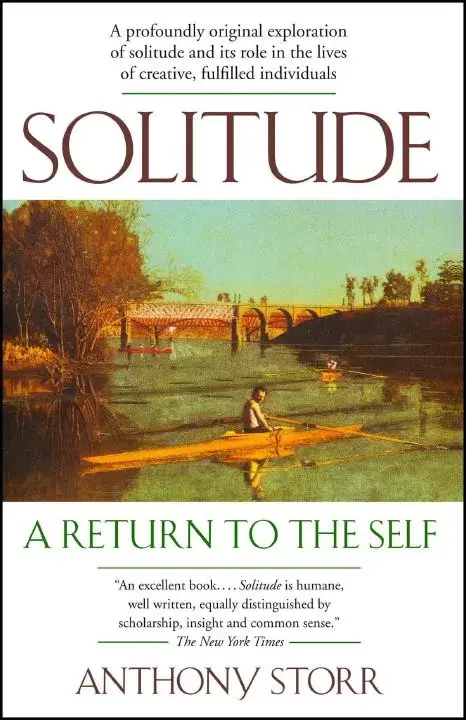
Solitude: A Return to the Self by Anthony Storr explores the unexpected benefits of solitude.
Chapter 13, Getting It Right, can be especially helpful to you if you are struggling with loneliness, with its step-by-step guide.
First published in 1988, the book redefines solitude as invaluable for personal growth and self-discovery.
Storr challenges that relationships are the only source of human happiness. He says solitude and isolation are just as important as relationships. And spending time alone can make us feel happier, be creative, and be more productive.
Storr supports his arguments by taking examples from the lives of world-famous artists, writers, and thinkers — Beethoven, Kant, and Kipling. He shows how they used solitude to produce some of the greatest works of humanity.
The book can change your ideas on being alone. It can show you why and how you might enjoy time alone, using it to discover yourself and grow.
The writing style could feel dense to some readers.
Two quotes from the book:
- “The capacity to be alone is a valuable resource when changes of mental attitude are required. It is a source of energy and strength which enables us to undertake difficult tasks.”
- “The creative individual is more likely to be found in solitude than in groups.”
2. Loneliness by John T. Cacioppo
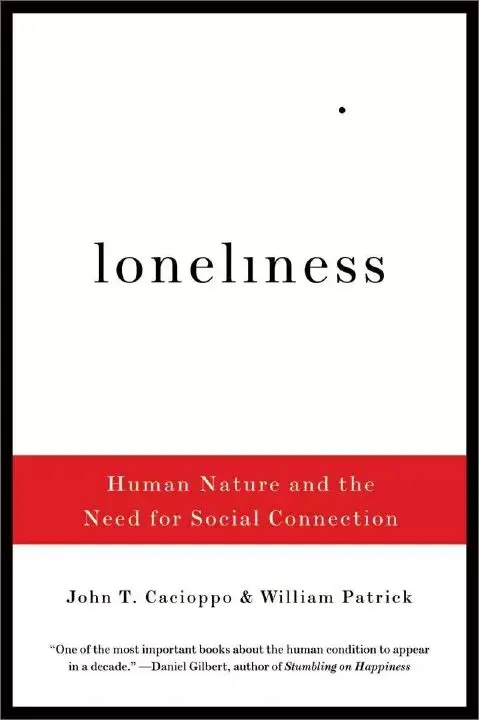
Loneliness: Human Nature And the Need For Connection is a groundbreaking book on the science of loneliness and its impact on our physical and mental health.
John T. Cacioppo is a professor of psychology at the University of Chicago. This book documents his life’s work on loneliness. The book is part of his legacy.
Cacioppo’s research shows that loneliness is not just a subjective experience, but rather a biological and social phenomenon.
Social Effects of Loneliness:
- Evolutionary Need: We evolved as social creatures. Loneliness is a signal that our evolutionary need for social connections is not being met.
- Social Comparison: We constantly compare ourselves to others. If we perceive that our relationships are less than those of others, we may feel lonely even if we have enough social connections.
- Social Isolation: While loneliness is a personal feeling, physical and emotional distance from others (social isolation) can increase the likelihood of feeling lonely.
- Cultural Factors: Some cultures champion individual achievement (as seen in this popular adage, “You’re all you’ve got”), which can sometimes lead to feelings of isolation.
Biological Effects of Loneliness:
- Neurochemistry: When we feel lonely, our brains react similarly to how they do when we experience physical pain. The same regions of the brain light up.
- Hormonal Changes: Loneliness can lead to changes in hormone levels, such as increased cortisol (the stress hormone) and decreased levels of oxytocin, which is associated with bonding and social connection.
- Immune System: Chronic loneliness can weaken the immune system, making lonely people have higher levels of inflammation and more susceptible to illness, disease, and death.
Loneliness has been found to have health effects comparable to smoking 15 cigarettes a day.
Thankfully, the book also offers practical guidance on how to deal with loneliness:
- The best way to handle loneliness is to build meaningful social connections.
- The lonely person can explore and reframe their fears about social situations.
- Set goals for social outreach and meeting people, like joining groups and volunteering.
- The focus should be on building a few high-quality relationships, not having many friends.
Cacioppo emphasizes that people need real people in front of them — talking, laughing, sharing, and learning from each other. We need to see their faces, feel their emotions, read their body language, and feel their touch.
Here are two quotes from the book:
- “Real relief from loneliness requires the cooperation of at least one other person, and yet the more chronic our loneliness becomes, the less equipped we may be to entice such cooperation.”
- “The data tell us that loneliness seriously accelerates age-related declines in health and well-being, yet the idea of promoting connection is rarely discussed alongside the heated issues of the cost of pharmaceuticals and other medical interventions necessary to deal with an increasingly lonely, isolated, and aging population.”
Daniel Gilbert, the author of “Stumbling on Happiness,” says, this book is “one of the most important books about the human condition to appear in a decade.”
3. The Loneliness Companion by Shrein H. Bahrami
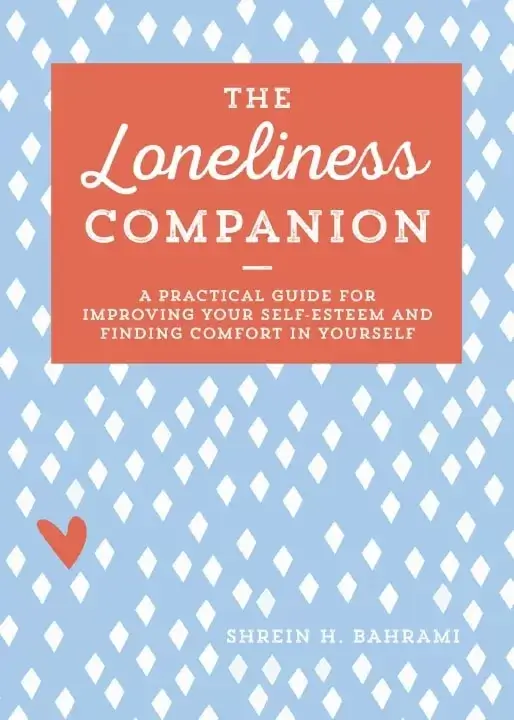
The Loneliness Companion is a practical guide for anyone struggling with loneliness.
Shrein H. Bahrami, a marriage and family therapist in San Francisco, shares how a lonesome person may improve their self-esteem, find comfort in oneself, and cope with feelings of alienation and isolation.
She shares how the lonely person may heal their past, feel worthy of platonic and romantic love, and embrace solitude while avoiding self-isolation.
And how to build healthy relationships and find comfort communities in our hyper-connected but hyper-isolated modern world.
- The book is easy to read and understand.
- The exercises are practical and actionable, providing real solutions.
- The author’s personal experiences make the book relatable and engaging.
Here are two quotes from the book:
- “Loneliness is not a disease, but it can be a symptom of something deeper going on within us. It can be a sign that we need to take a closer look at our lives and make some changes.”
- “The key to overcoming loneliness is to learn to love and accept ourselves for who we are, flaws and all. When we can do that, we open ourselves up to the possibility of deeper connections with others.”
4. Whereabouts by Jhumpa Lahiri

This is a collection of stories by the Pulitzer-prize winning author Jhumpa Lahiri.
“Whereabouts” portrays the daily wanderings and inner workings of a solitary, unnamed woman in her mid-40s working as a teacher, who lives alone in an unnamed Italian city.
The narrator is a complex and introspective character. She is deeply aware of her solitude, but she also finds solace in her own company. Observant and thoughtful, she reflects on the world around her in a stunningly insightful way.
Written in 46 short vignettes, each captures a moment in her life, exploring urban solitude, alienation, loneliness, and growing old. The reader feels the narrator’s melancholic sense of nostalgia.
One of the pensive moments is when she eats alone in a restaurant with other people also eating alone, with no one exchanging words. She looks at the swimming pool, and observes,
“the water in the pool isn’t so clear after all. It reeks of grief, of heartache. It’s contaminated (…). It burrows into my soul; it wedges itself into every nook of my body.”
Lahiri’s prose is a beautiful and evocative ode to an ordinary life. She captures the atmosphere of the city with precision and artistry. The novel is full of sensual details, from the taste of a morning coffee to the smell of the rain.
It is a novel about the human condition of solitude, alienation, and the search for identity in an alien city. The book offers a stylish and therapeutic release, and it is a beautiful novel by Lahiri.
Whereabouts stays with you long after you have finished reading it.
5. On Love and Loneliness by Jiddu Krishnamurti

Jiddu Krishnamurti’s book “On Love and Loneliness” is a profound exploration of the nature of love and loneliness.
Krishnamurti argues convincingly that true relationships can only happen when there is self-knowledge of what divides and isolates us, not self-centeredness.
“Loneliness comes when all our days are spent in self-centeredness. The very activity of self-centeredness is producing loneliness. Because it is narrowing my whole, or the vast extraordinary existence of life, into a small little me.”
He encourages readers to look within and pay attention to their own possessiveness, jealousy, desires, and insecurities, to free themselves from the unconscious conflicts they create.
Krishnamurti argues that love and loneliness cannot coexist. When there is a feeling of loneliness, love is not present.
He also points out that people often confuse the facts of love with love itself, mistaking actions such as hugging, kissing, and holding hands with love.
He suggests love is an active, living process, and says, “Love is something totally new every day, but pleasure is not, pleasure has continuity. Love is always new, and therefore it is its own eternity.”
Overall, the book offers a compelling case to investigate our intimate relationships with ourselves, others, and society, stripping away the layers of conditioning and socialization.
6. Uninvited by Lysa TerKeurst

Uninvited by Lysa TerKeurst is a book on Christian living that explores rejection and abandonment, and the resulting loneliness.
Uninvited speaks to the heart of anyone who has ever felt left out or lonely. The author shares her own rejection and loneliness, offering readers comfort and inspiration, and helping readers face the fight and bounce back.
The book is well-written and engaging, making it easy to read and understand. The author speaks directly to the reader. This makes the book like listening to someone and helps readers feel less alone.
The book is inspiring in that it offers several helpful practical advice on how to deal with rejection and loneliness in the book, which encourages the reader to see themselves as loved and valuable.
Here are two quotes from the book:
- “Honesty isn’t trying to hurt me, it’s trying to heal me.”
- “The mind feasts on what it focuses on.”
The only downside to Uninvited is that some readers may find the religious and God-focused aspect of the book too heavy-handed, while others may not relate to the stories in the book.
7. Our Epidemic of Loneliness and Isolation: The U.S. Surgeon General’s Advisory
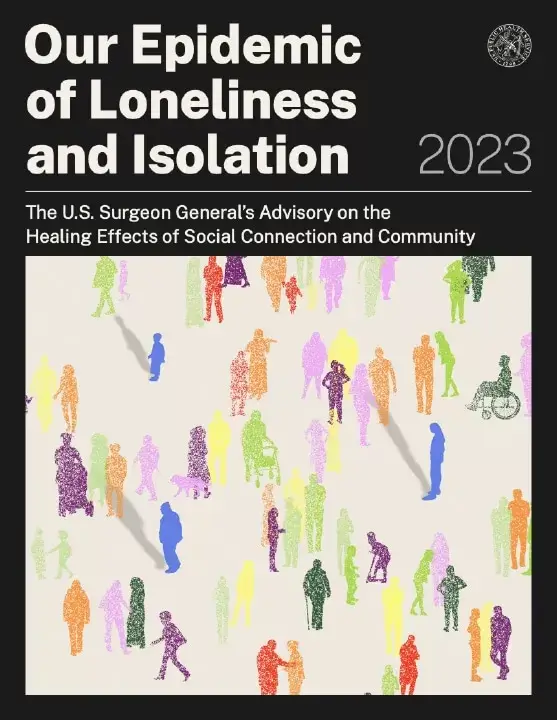
Loneliness is a growing epidemic in the United States, with nearly half of all adults reporting feeling lonely at some point in the past year. It has a significant impact on public health.
The Surgeon General’s Advisory on Loneliness and Isolation is from Dr. Vivek H. Murthy, the 19th and 21st Surgeon General of the United States.
Factors that contribute to loneliness and isolation, as per the report:
- Social and technological changes making people feel more disconnected from each other
- Lack of affordable housing
- Discrimination and racism
- Mental illness
- Social isolation
- Poverty
The report defines social connection and community as:
- Social connection: “the relationships and interactions that we have with others, and the sense of belonging that comes from these connections.”
- Community: “a group of people who share common interests, goals, or values, and who work together to create a better place to live for themselves and others.”
The report lays out the benefits of social connection and community as:
- Stronger communities
- Reduced risk of mortality
- Reduced crime and violence
- Enhanced social and emotional skills
- Improved physical and mental health
- Increased resilience to stress and adversity
- Greater sense of purpose and meaning in life
The Surgeon General’s Advisory calls for action to address the epidemic of loneliness and isolation. It proposes a National Strategy to Advance Social Connection that is built on six pillars:
- Strengthen Social Infrastructure in Local Communities
- Enact Pro-Connection Public Policies
- Mobilize the Health Care System to Promote Social Connection
- Harness Technology for Social Connection
- Build Research and Evidence Base for Social Connection
- Develop and Implement a National Campaign to Address Loneliness and Social Isolation
Strategies to combat the loneliness epidemic:
- Address discrimination and racism
- Create more walkable and bike-able communities
- Invest in social programs that promote social connection and community
- Promote mental health literacy and reduce the stigma associated with mental illness
- Support informal social networks, such as faith-based organizations and neighborhood groups
- Support programs that help people with mental illness and other challenges to connect with others
Here are two quotes from the report:
“Loneliness and isolation represent profound threats to our health and well-being. But we have the power to respond. By taking small steps every day to strengthen our relationships, and by supporting community efforts to rebuild social connection, we can rise to meet this moment together.”
“Social connection is essential for our health and well-being. We all have a role to play in creating a more connected society.”
Dr. Vivek H Murthy also wrote a book on it: Together: The Healing Power of Human Connection in a Sometimes Lonely World
Bonus Recommendations
Some honorable mentions, each book a powerful write-up on loneliness:
The Art of Stillness: Adventures in Going Nowhere by Pico Iyer
Iyer says solitude is not simply the absence of other people, but rather a state of being in which we are fully present with ourselves. Solitude can be a time for reflection, creativity, and spiritual growth, if we learn to manage it effectively.
Some practical tips to cultivate the art of solitude from Iyer:
- Finding time for solitude each day, even if for a few minutes.
- Creating a space where you can be alone and undisturbed.
- Gently allowing yourself to experience the emotions that accompany loneliness.
- Doing things that help you to focus on the present moment, such as meditation, yoga, or spending time in nature.

A Biography of Loneliness: The History of an Emotion by Fay Bound Alberti
Alberti, a historian of emotions, argues that loneliness is not a universal or timeless emotion, but rather a product of history and culture. She says that loneliness emerged in the 18th century because of the Industrial Revolution, which led to the growth of cities and broke up traditional communities.
Here are some key takeaways from the book:
- Loneliness is not a universal or timeless emotion, but rather a product of history and culture.
- Loneliness emerged as a distinct emotion with the rise of individualism and the decline of traditional social structures.
- Loneliness has been both stigmatized and idealized throughout history.
- Loneliness has been used to justify both social exclusion and social reform.
The Vanishing Neighbor by Marc J. Dunkelman
Marc Dunkelman says that American neighborhoods are less connected now than they used to be.
Traditional neighborhoods had the “middle ring” – the people outside family and friends who gave us a sense of belonging, helped us build social capital, and fostered a strong sense of community.
Dunkelman says that the technological revolution has made it easier to connect with people from all over the world, but harder to connect with people who live next door. Suburbanization has worsened this by creating more isolated communities.
Dunkelman calls on us to find ways to rebuild the middle ring. He suggests we take on more roles in neighborhood gatherings, volunteer, and make efforts to get to know the people who live around us.
A Christmas Carol by Charles Dickens
Charles Dickens’ A Christmas Carol is a powerful story about loneliness, love, and redemption, cherished by readers of all ages for over 150 years.
It is the story of Ebenezer Scrooge, a miserly old man. He is visited by three ghosts on Christmas Eve, who show him his past, present, and future. Scrooge realizes that it’s never too late to change and share his heart with others, despite his mistakes.
Scrooge is an anti-hero who, driven by greed and selfishness, lives a lonely, unhappy life. His turn from miser to philanthropist is one of the most satisfying character arcs in all literature.
The story is full of heartwarming and humorous moments.
Psychology of Loneliness
- Psychologists consider loneliness to be a stable trait. People who feel lonely keep feeling lonely for most of their lives, except for some slight changes during different life circumstances.
- A 2006 report by the American Sociological Review found that 25% of the people felt they had no close friends in whom they could confide. It was double that of a 1985 report.
- Cognitive behavioral therapy (CBT) has been shown to be the most effective treatment for loneliness.
Final Words
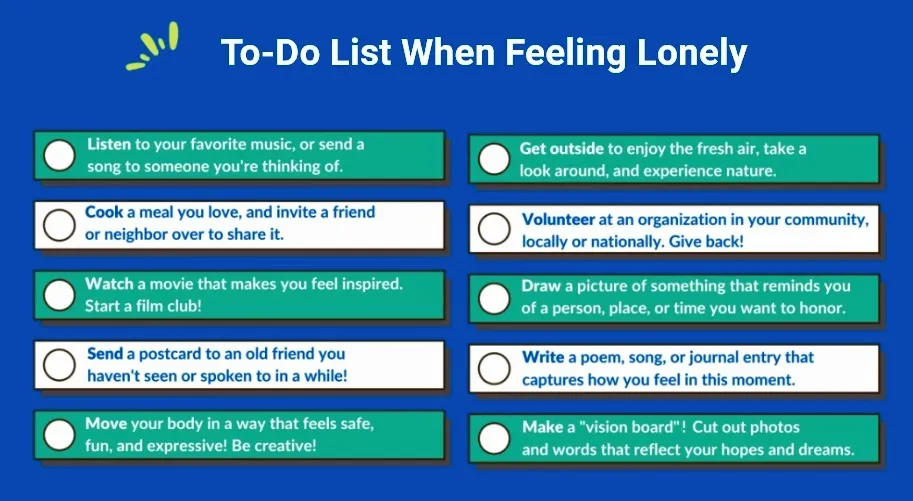
√ Please share it with someone if you found this helpful.
√ Also Read: Are You Lonely In A Relationship?
• Our Story!
